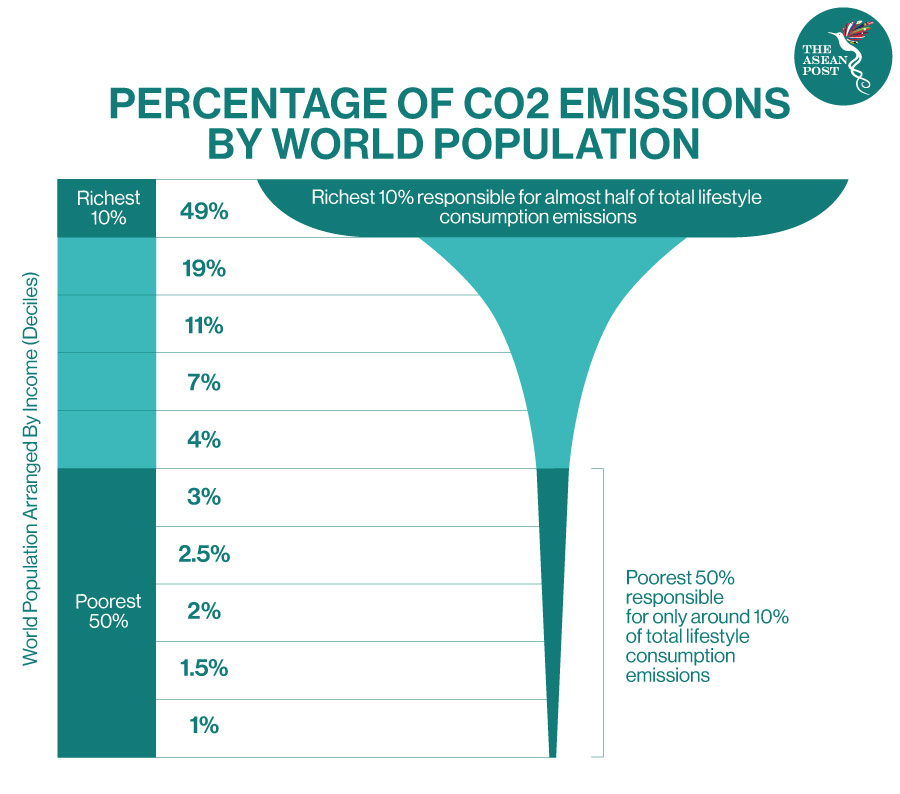Climate change, driven by human emissions of greenhouse gases (GHG), have caused devastating impacts on some parts of the world. This includes flooding, extreme rainfall patterns, increased heat and erosion in coastal areas, among others. With just one Celsius of warming so far, we have already seen frequent and intense wildfires, droughts, cyclones and super storms rendered more powerful by rising seas.
To talk about climate change is simply to talk about its main contributor, which is carbon emission – the process of releasing carbon or GHG emissions into the atmosphere.
As governments worldwide impose movement restrictions amid the coronavirus crisis, the Earth has experienced a sharp fall in carbon emissions. Nevertheless, the climate crisis continues to grow. Non-profit organisation Oxfam noted that extreme weather disasters have not stalled during the COVID-19 outbreak, from cyclone Amphan in India and Bangladesh and intense flooding in the Philippines to raging wildfires in the United States (US).
According to Oxfam’s research published in its report titled, “Confronting Carbon Inequality,” the richest one percent of the world are responsible for more than twice as much carbon pollution as the poorest half of the population.
From 1990 to 2015, it was revealed that the richest 10 percent, about 630 million people, were responsible for 52 percent of cumulative carbon emissions. This depleted the global carbon budget by nearly a third – 31 percent – for those 25 years alone.
Carbon budget is the amount of carbon dioxide that can be added to the atmosphere without causing global temperatures to rise above 1.5 degrees Celsius.
The poorest 50 percent, 3.1 billion people, were responsible for just seven percent of cumulative emissions, and used just four percent of the available carbon budget. The richest one percent alone, were responsible for 15 percent of cumulative emissions.
In a similar study conducted by the US Census Bureau in 2005, it was found that high-income households in the country – those earning more than US$75,000 a year, consumed double the energy of the poorest households (those earning less than US$10,000 a year). Thus, the rich significantly contribute to carbon dioxide emissions as well.

“The over-consumption of a wealthy minority is fuelling the climate crisis yet it is poor communities and young people who are paying the price,” explained Tim Gore, head of policy, advocacy and research at Oxfam.
“Such extreme carbon inequality is a direct consequence of our government’s decades long pursuit of grossly unequal and carbon intensive economic growth,” he added.
Carbon Inequality
Oxfam stated that extreme carbon inequality is driving the world to the climate brink and close to exceeding the 1.5 degrees Celsius target of the Paris Agreement. According to a report by the Intergovernmental Panel on Climate Change (IPCC), with global warming of 1.5 degrees Celsius, there would be increased risks to “health, livelihoods, food security, water supply, human security, and economic growth.”
Although the world’s poorest 3.5 billion people contribute to little carbon emissions, they are most vulnerable to climate change’s pernicious effects such as storms, floods and droughts.
“Unequal economic growth slows poverty reduction rates. But it has another cost: it means that the global carbon budget is being rapidly depleted, not for the purpose of lifting all of humanity to a decent standard of living, but to a large extent to expand the consumption of a minority of the world's very richest people,” noted Oxfam.
This is an injustice which is felt most by the world’s poorest and most vulnerable – both who are least responsible for the climate crisis.
Oxfam has also predicted carbon emissions to rapidly rebound as COVID-19 restrictions are lifted in countries across the world. Unless they continue to decline rapidly, the 1.5 degrees Celsius global carbon budget will be fully depleted by 2030.
Governments and policy-makers must put climate change and inequality at the centre of any COVID-19 recovery plan.
“The right public policy measures, enacted now, can both cut the emissions of the richest before the 1.5 degrees Celsius global carbon budget is completely depleted, and create a healthier, more cohesive and resilient society.”
Related Articles:
